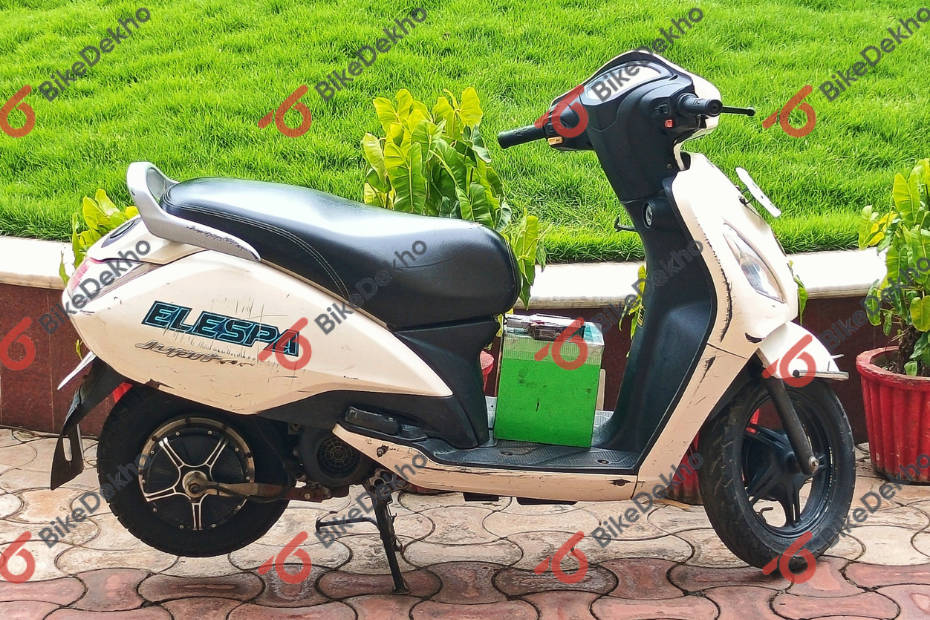Exclusive - Pune-based Startup Builds India’s First Hybrid Scooter
Published On March 24, 2023 09:00 IST
By Sudipto Chaudhury for TVS Jupiter
- 2041 Views
Aims to eliminate range anxiety completely!

Petrol prices are on an upward spiral, making electric scooters the perfect alternative: they’re much cheaper to maintain, operate silently, set off immediately when you twist the throttle, and boast quite a few features. Moreover, some of them, like the latest iteration of the Ola S1 Pro with the MoveOS3 update, give massive (147km, in this case) range numbers too.
However, range anxiety is still a pertinent issue and the chief reason people shy away from making the leap to EVs. But that’s something Pune-based startup Elespa is poised to change, courtesy of the hybrid (electric assist) kit they have created.
What is it exactly?

The simple answer is in the name: Elespa, where “ele” refers to electric and “spa” refers to the spark plug in petrol engines. Hence, the kit has battery power working together with the scooter’s petrol engine.
Now keep in mind, it isn’t a completely alien concept. We’ve already seen Yamaha's Blue Core technology on the Yamaha Fascino 125 Hybrid and RayZR 125 Hybrid scooters, which sport an electric motor that helps the petrol engine start-up smoother, as well as gives a boost at low speeds.
Elespa, however, has turned that up a notch. So the petrol engine has no internal componentry compatible with the electric aspect. Instead, it has a 10-inch hub-mounted motor, rated at 1.44kW (nominal) and 3.5kW (peak), bolted directly to the rear wheel.

The motor works in conjunction with a removable 1.5kWh Lithium Ferro Phosphate battery. Elespa claims a range of around 70km, and a charging time of about four hours. The battery can be accommodated either under the seat, or atop the floorboard within a custom-made casing, and is switched on via an MCB switch located under the seat.
Elespa’s kit (comprising the battery, motor and peripheral electricals) is currently mated to a TVS Jupiter 110. The scooter switches on in pure electric mode. For a solo rider, the claimed top speed in electric mode is 60kmph, and about 55kmph with a pillion. It also offers a ‘boost mode’ where the motor works in conjunction with the petrol engine (switched on via the scooter’s ignition switch, on the fly), for improved acceleration uphill or for overtaking. Finally, pressing the apron-mounted button (with a blue backlight) switches off the motor, running the scooter solely on petrol power.
Sounds simple? Well, it isn’t! Read on to know why…
The challenges to overcome

Starting off with the hub motor which is – as mentioned – connected directly to the rear wheel, leading to multiple issues. Firstly, the motor (which weighs 8kg) has a significant increase in unsprung weight. Secondly, it’s right next to the exhaust, and though Elespa claims it’s heat-resistant up to 80 degrees Celsius with its casing featuring fins for improved heat dissipation, chances of overheating the motor, however remote, are a niggling prospect. And finally, the added torque from the rear wheel entails added reinforcement; in this regard Elespa has so far done a stop-gap arrangement of a metal brace.
Then comes the battery. At 16kg, it not only makes the scooter top-heavy when positioned under the seat but also robs you of all underseat storage. The alternative is positioning it on the floorboard. But for it to stay in place involves creating a custom-made cage, and consequently very little space for your feet. Here, the River Indie has a workaround of sorts with its accessory footpegs, though we doubt Elespa will adopt it.
And as mentioned, its heavy weight makes it moving around a real workout. And though Elespa claims it’s already working on a wireless charging platform to overcome this, the final product is not only some time away but will also be a hassle to install in the average residential parking.
The Final Word

The price of the kit currently stands at Rs 60,000, which may not be for everyone. However, this one-time investment will reduce significantly once the kit goes into commercial production.
Next, recharging the kit requires only a claimed 1.5 units of electricity – at a cost much lower than petrol – to cover close to 60km. Moreover, this 60km figure is supplemented by the donor scooter’s fuel range (a Jupiter 110 in this case, whose tested fuel efficiency figures stand at 60.44kmpl in the city and 66.7kmpl on the highway).
The total figure, then, multiplied by the fuel tank’s capacity, ultimately means the chances of you getting stranded are almost zero!
